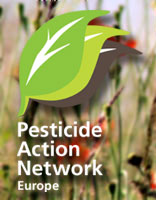18th June 2014
Brussels
Endocrine Disruption Criteria Update: A roadmap to nowhere
The roadmap published yesterday by the European Commission on Endocrine Disruption Chemicals criteria incorporates all the threats to cancel-out the effectiveness of the pesticide and biocide regulations to protect human health and the environment.
Six months after missing the deadline to present the criteria for identifying endocrine disrupting chemicals (EDCs), the European Commission finally released yesterday afternoon a road map on the definition of the criteria within the Plant Protection Product EC 1107/2009 and Biocides Product Regulation EU 528/2012 [1]. The roadmap reveals what PAN-Europe had foreseen: two out of the three options consider adding risk-assessment and socioeconomic elements in the decision-making to regulate EDCs, watering-down in such way the effectiveness of these regulations to protect human health and the environment.
According to the pesticides and biocides regulations, substances having endocrine disrupting (ED) properties should not be approved. The European Council and the Parliament have actually agreed that approval of pesticides should be based on specific “cut-off” criteria, also known as the “hazard approach”, i.e. the production or use of a chemicals with any kind of ED properties will not be permitted. Yet, several years later, instead of obtaining a consensus on what the criteria that define EDCs are, we receive a roadmap, which describes how the initially hazard-based approach could be completely modified.
The main reason for the delay in decision-making is because the criteria for EDC are seen by industry as a major threat to their business. Industry is used to a “risk assessment approach”, where it is assumed that exposure to a substance at low doses may be of “low risk” and consequently “harmless”. This is not the case for EDCs where smaller doses may be even more potent, especially during sensitive periods of development such as in embryos and newborn babies and hence the “hazard approach” was decided for their identification. The ED “low dose effect” is not a hypothesis, it has been widely described in the scientific literature [2]. Recently, PAN-Europe reported how Commission health service DG SANCO, with the support of EFSA’s industry-friendly approach, was actively looking to use as an escape route, in case of a ban of pesticides: the “negligible exposure” derogation [3]. Indeed the roadmap suggests that decision-making may be based on negligible “risk - a clear “risk-assessment” element, and moreover considers to include a socio-economic analysis in the evaluation of placing harmful EDCs in the market.
PAN-Europe EDC expert Angeliki Lysimachou said “we are highly concerned with the possibility of adding risk assessment and socioeconomic elements in the evaluation of EDCs as the adverse effects of these compounds upon human health and the environment should not be evaluated with economic terms, since economy is not constructed to protect human health and as tiny exposures at the wrong moment in life may induce dramatic consequences: adverse sex organs development, impaired cognition, cancer, diabetes, obesity etc.”.
2. Vanderberg et al., 2012. Hormones and endocrine-disrupting chemicals: low-dose effects and nonmonotonic dose responses. Edocr. Rev. 33: 378-455
— ENDS —
< Back


